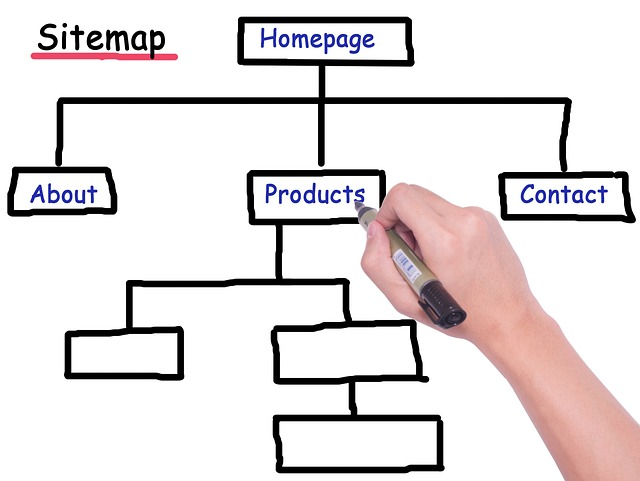If you’re running a website, you must ensure that your visitors can easily find what they’re looking for. This is where a xml sitemap comes in handy in supporting search engine crawlers.
So what is the purpose of a sitemap? It is a diagram of your website that shows the hierarchical structure of its pages. In other words, it shows how everything is connected so google can crawl and index the content.
Having a sitemap can be highly beneficial to your website because it makes it easier for search engines to index your pages and for visitors to navigate your website.
This blog post will discuss the benefits of having a xml sitemap and how to create one for your website.

There are two types of sitemaps: HTML and XML sitemaps.
XML sitemaps are designed for search engines, while HTML sitemaps are designed for humans.
XML sitemaps can provide search engines with information about your website structure, including when pages were last updated and how often they change.
On the other hand, HTML sitemaps are designed to be user-friendly, providing visitors with an easy way to navigate your website.
Having an XML sitemap and an HTML sitemap can benefit your website in the following ways:
- They help search engines index your website more efficiently, which could lead to improved rankings.
- They make it easier for visitors to find what they’re browsing for on your site, leading to improved user experience.
- They can increase the ranking of important pages, such as frequently asked questions and contact information.
- They allow users to quickly find related content on your website, which could lead to more page views.
Here are 10 simple ways to boost your rankings with HTML SEO

How To Create A Sitemap
Creating an XML sitemap for your website can seem daunting, but it doesn’t have to be.
There are both manual and automated methods that you can use to create a sitemap, and which one you choose will depend on your needs. For example, you can make your sitemap manually if you have a small website with few pages.
However, if your website is large or constantly changing, you’ll need to use an automated method. There are several free and paid sitemap generators that you can use, and they will typically give you the option to download or export your sitemap in XML format.
If you are using WordPress here is how to create a site map with the Yoast SEO plugin
Time needed: 30 minutes
Creating a sitemap with the Yoast SEO plugin
- Download and install Yoast SEO plugin.
- Go to advance settings within Yoast plugin.
- press generate a sitemap
- done, yoast will automatically make your xml sitemap
- Take your site map URL and add it to your google search console
Once you’ve generated your sitemap, all you need to do is upload it to your server and add it to your robots.txt file. This will ensure that search engines can find and index your sitemap, making it easier for them to crawl your website.
How can you use sitemaps to improve your website’s search engine visibility on google search console?”
A sitemap is an crucial tool for any website, as it helps search engines to index the site more effectively. In addition, by providing a clear and concise overview of the site’s structure, a sitemap makes it more straightforward for crawlers to find and index all of the site’s pages.
This can help improve the site’s search engine ranking and visibility and make it easier for users to find the information they are looking for.
In addition, sitemaps can provide additional information about each page on the site, such as the page’s title and description, which can also help improve the site’s visibility and click-through rate.
By taking advantage of sitemaps, you can help to ensure that search engines correctly index your website and that your users can easily find the information they need.
Pro Tip: did you know you can remove old content from google
What common mistakes do people make when creating or using sitemaps on their websites?
Some common mistakes people make when creating or using sitemaps on their websites include the following:
- Only have some of the site’s pages in the xml sitemap.
- Failing to update the xml sitemap when changes are made to the website.
- Forgetting to add a robots.txt file that includes the location of the sitemap.
Other mistakes may include submitting an outdated sitemap to search engines, using a sitemap generator that isn’t compatible with the website’s platform and having pages in the sitemap that are blocked by robots.txt or no-index tags.
By creating an accurate and up-to-date xml sitemap for your website and submitting it to search engines, you can help ensure that your site is properly indexed and ranked.
In conclusion, understanding how to create and use a xml sitemap effectively is integral to optimising your website’s ranking and visibility on popular search engines.
By avoiding common mistakes and taking advantage of a xml sitemap benefits, you can help ensure that your website is correctly indexed by search engines and easily found by users.

All in all, a xml sitemap is an important tool for any website owner, whether you are just starting out or have been around for awhile.
It helps to ensure that all of your pages are properly indexed and ranked by search engines, making it easier for potential customers to find you.
If you would like help implementing a sitemap or other seo strategies on your site, please get in touch and find out how our seo services can help you grow your revenue.
